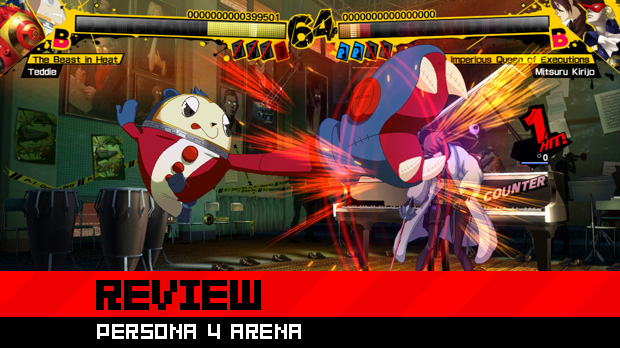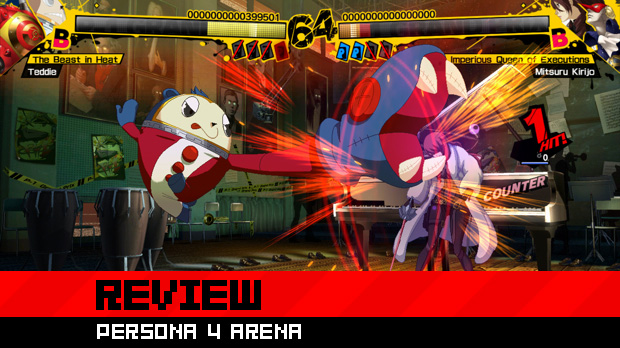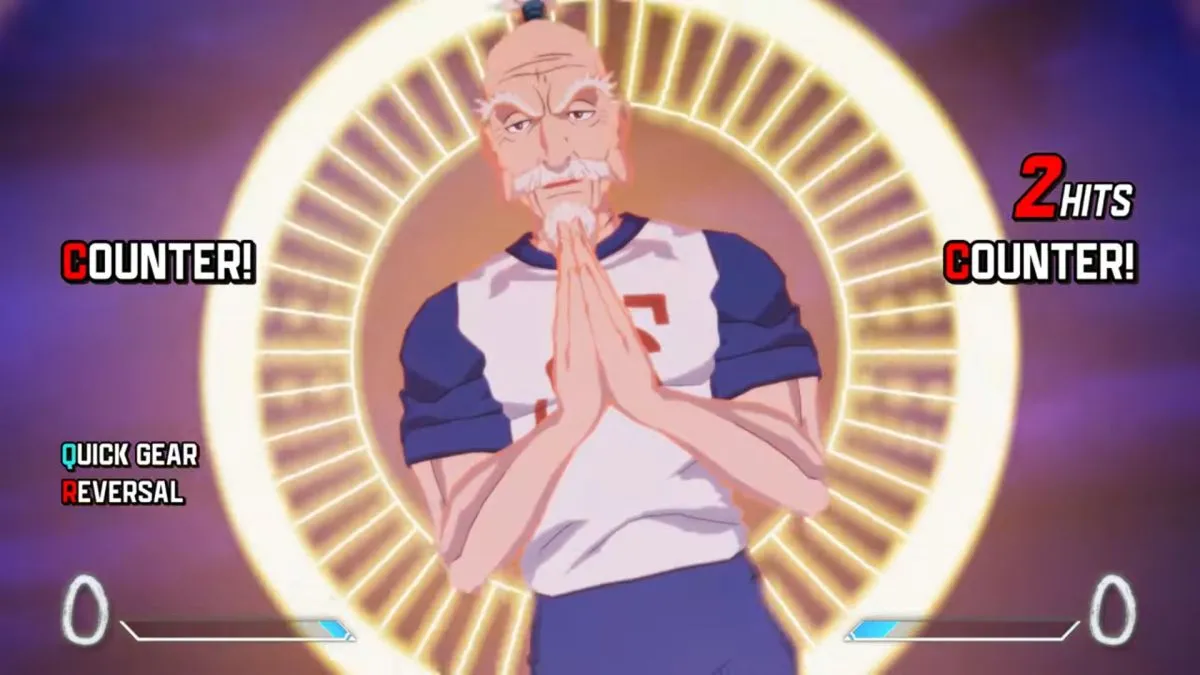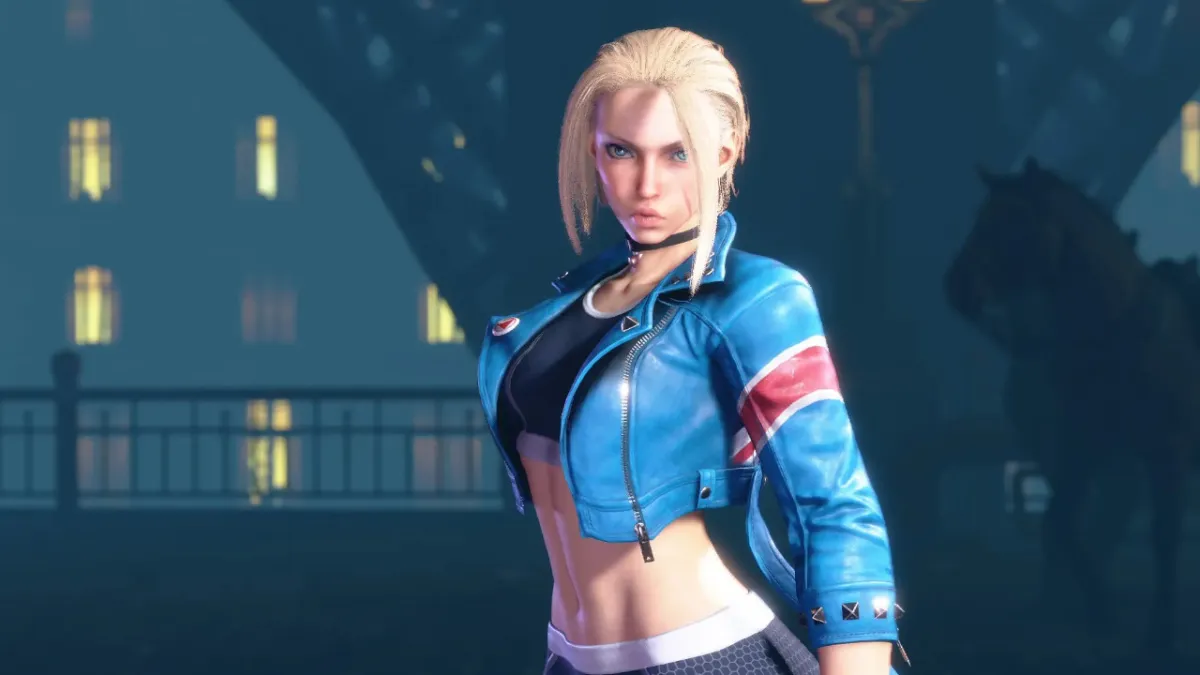Never in a million years would I have dreamed that I’d be playing a fighter based on a dungeon crawling role-playing game. Yet here I am, button mashing to call forth my Persona every few seconds, then plowing through countless dialogue boxes to follow the healthy storyline after another narrow victory. It’s the weirdest thing and I’m still a bit confused, but I’m loving it anyway.
Persona 4 Arena is a strange beast in that it has the ability to satisfy both long-time Persona series fans and fighting game aficionados. I would imagine that finding a middle ground between the two was quite difficult, but Atlus and Arc System Works have pulled it off with flair.

Persona 4 Arena (PlayStation 3 [reviewed], Xbox 360)
Developer: Atlus, Arc System Works
Publisher: Atlus
Released: August 7, 2012
MSRP: $59.99
While it’s based on the popular Shin Megami Tensei: Persona franchise and serves as a sort of continuation to the story of Persona 4, Persona 4 Arena is a straight-up arcade fighting game. Those looking for role-playing, town exploration, dating sim elements, or even guns to heads will find none of that. While this looks and sounds just like a Persona RPG, only one-on-one fighting action will be found here. It’s a spin-off that spun waaaay off.
I like to think of Persona 4 Arena as having two sides, much like the series characters would, with their True Self and their Persona, though there’s not really a “bad” or dark side to the title. While it’s a beautifully unified package, there are features and input that clearly come from one side or another, which makes sense as the game is a combined effort from both Atlus and Arc System Works.

P4A is packed with fan-pleasing nods and familiar elements that will serve series followers who might not be as well-versed on fighting games. Let’s call this the Atlus side. You’re getting tons of beautiful character art, top-notch animation, and Shoji Meguro’s awesome music, pumped into storylines straight out of the Persona 4 world, complete with involving dialogue and character voicing in both Japanese and English. It’s delightful stuff that any Persona fan would love.
The game’s story puts Persona 4‘s cast right back into the thick of it some two months after the Inaba murder mystery came to a close. The Midnight Channel is back on the air, but this time the whole gang shows up on the screen in what looks to be a tournament fighting program where the friends are pitted against each other. So back into the TV they go, but now, instead of fighting shadows, they’re up against each other.
And this isn’t some wimpy, loose, lead-up-to-the-boss-fight fighting game story. In fact, just going through just one of the dozen or so characters’ stories in Story Mode could take you a couple of hours. To see it all, you’re going to have to work your way through what could be dozens of hours of dialogue and cutscenes, most of which should be a treat for series fans. This is a real story with a solid progression and a definite end, with individual paths for each character, including some of the guest and supporting cast. While they all follow the same basic storyline, each sheds some new light in the story, and only by playing them all will you get a full appreciation of the tale they’ve crafted for this game.

But even with as much as I liked the story in P4A, those who just want to get to the fighting may grow tired of reading after awhile, and even series fans may feel that some bits go on too long. These people should skip Story Mode and go right into Arcade Mode. It does away with most of the voicings, cutscenes, and support art, but it still does a decent job of laying out an entertaining story. Or, with a friend, get into Versus mode, which is also mostly dialogue-free.
While we’re on modes, other modes, like the Lesson and Training modes, have no story bits and focus entirely on teaching you the system. An enjoyable variant, Challenge mode, has you working through 30 preset moves and combos of progressing difficulty. While crazily difficult near the end, if you can master this mode, you’ll be able to pull off some beautifully complex combos. The Score Attack mode is out to bust your balls with a tough string of opponents who you’ll try to take down for high score. Finally, the Network mode lets you play with opponents worldwide. More on that last one later.
Going from RPG to fighter worked nicely, as it wasn’t much of a stretch to turn Persona 4‘s cast into fighting game characters. While their looks and personalities are basically the same, a few tweaks and accentuation have been put into place to have them make sense as combatants in a fighting tourney. So it’s the same cast that fans of the series already know and love, only now shown in a new light and playable in completely different way.

There’s a healthy mix of fighting types to be found among the cast to suit every style. I enjoyed playing the ranged type (Yukiko or Persona 3‘s Elizabeth) the most, but stronger, closer characters like Akihiko and Kanji were equally as fun. Aigis, another Persona 3 entry, is also ranged, but has some tricks up her robo-sleeves with an alternate stance and would be a good fit for more experienced players. I think creative players will enjoy exploring some of the game’s more inventive and uncommon moves with characters like Teddie or Naoto. Really, there are no duds in P4A‘s roster.
While there is a lot in the way of dialogue and story, P4A is a fighting game and a great one at that. This is more of the Arc System Works (BlazBlue, Guilty Gear) side, of course. What comes from their side is all that you’d expect: a solid, tight fighting game engine, lovely animation, and net code that fighting game fans can really get behind.
The game’s battle system lets each fighter use their respective Persona in battle, essentially giving the player two characters for one. Two of the four attack buttons are assigned to character attacks (weak and strong), and the other two call forth their Persona for stronger and often flashier ones. In a sort of tag fighting mechanic, character and Persona attacks can be used in tandem, opening the door for combo-ing and chaining, and further interplay between character and Persona begs to be explored. But even from their most basic uses, like mashing the weak attack button for auto combo-ing, these four attack buttons alone make for some pretty solid fighting game play that just about anyone can get into.

Just like any good fighting game, true appreciation only comes from diving down deeper to explore the system’s intricacies, and there are plenty of intricacies to explore. For example, instant blocks, recoveries, escapes, evades, reversals, stuns (All-Out attacks — just like the RPG!) and cancels are all possible with practice. While none of these are too difficult to input or learn, incorporating them into your repertoire is going to be a bit more of a challenge than working in, say, throwing. Beyond this, fighters can also suffer from RPG-like status ailments, like poison, panic, fear, or charm, all of which have temporary effects. There’s also an Awakened State that kicks in when you fall below a certain HP mark, giving you more skill points and letting you temporarily access even stronger skills.
Things become even more intricate when you try to track what goes on in the game’s four gauges. Having this many to keep track of may sound confusing, but they’re displayed clearly enough that they’re surprisingly easy to follow. The Hit Point gauge is pretty standard, though some skills can bring about regeneration of lost points. Your Persona also has a sort of health gauge made up of four cards, with each hit taking one away; once they’re all gone, your Persona is temporarily unavailable. The SP gauge is used for special moves and is refilled through successful standard attacks. Finally, the Burst gauge is used for special Arc System Works’ type Burst moves which pump up your abilities and can only be used once the gauge is completely full.

Persona 4 Arena‘s special moves — essentially Persona 4‘s magic spells — lean toward the lighter side of command inputting, with a lot of quarter-circle swiping or double QCF actions tied to them. Even fighting novices should feel right at home pulling most of them off, so much so that the first few rounds of play seem a bit too easy. The brilliance of P4A‘s battle system is that, in the right hands, all of the attacks and specials can be blended together in fantastic combinations that light the screen up and leave your opponent slack-jawed. One only needs to reference the last couple of combo challenges in the game’s Challenge mode to see how complex these strings can get. Or, if you’re playing any of the more experienced Japanese players online in Network mode, you’ll get more of a look than you care to see.
And while you won’t see it that often (conditions require a full SP bar and a nearly won match), the super-flashy Instant Kill moves are a great way to go out with a bang. Their animations are ridiculous and over-the-top, so much so that even the loser of the match will find themselves enjoying them. Trust me on that one.

Speaking of the Network mode, Persona 4 Arena’s works as advertised. Selecting the Quick Match option found me in a fight instantly just about every time I tried it, without issue. Given that my play time for this review took place before the North American release date, I fought against Japanese opponents, most of who were quite a bit better than I. The few I tried went smoothly after starting, though the pre-match stage and character introductions were always a bit jerky. And while I have yet to do much winning, all of the matches felt right, and I haven’t had any instances of lag or hanging. It seems that Arc System Works’ code is up to snuff.
They shot for the moon with the presentation of Persona 4 Arena but went beyond that and right into the next planet’s orbit. The entire game, from mere menus to detailed character animation, shines with polish and oozes with style. The character portraits and background art in the story segments are colorful and brilliant, and the animation scenes and their voicing are top-shelf stuff on both the Japanese and English sides. In actual battle, the 2D animation for the fighters’ sprites is as detailed and articulated as you’d expect from Arc System Works, though maybe a smidge less smooth than past console titles. As far as presentation goes, this is an insanely polished title that sets the bar even higher than BlazBlue did.

Persona series fans have a highly accessible fighter that brings them back in to Persona 4‘s world with a new story starring all of the main cast as well as some cameos from Persona 3 characters. Really, this game takes fan service to a new level with countless nods towards Atlus’ most loyal, in everything from the art to the storytelling. While it won’t win any awards for originality, the story content here is robust enough to rival some RPGs and long enough for series fans to feel right at home.
On the other hand, followers of Arc System Works’ fighters will feel just as much at home here with P4A‘s mechanics and subsystems and will want to stick around for its interesting and varied fighters. The standard arcade version would be enough for them, but this home version adds much more with its training, challenge, and score attack modes. It’s very easy to get into and rounded enough to suit just about all tastes, but at the same time complex enough to provide satisfying depth for well-versed fighting game fans. And its online Network mode means that there will always be someone out there who’s better than you to keep you going.
Everyone wins with Persona 4 Arena. This dream collaboration between Atlus and Arc System Works brings us a game that will easily stand out even in the crowded fighting game segment. It’s also sure to serve as a gateway drug for both RPG and fighting game fans to cross to the other side. Really, there’s nothing else quite like this.





